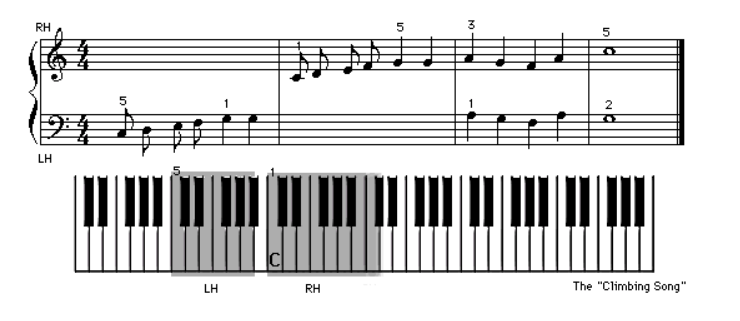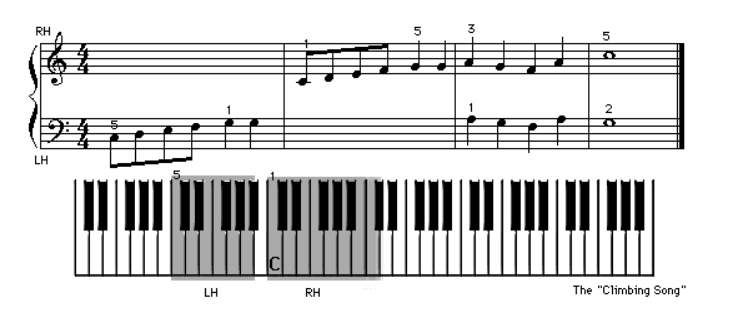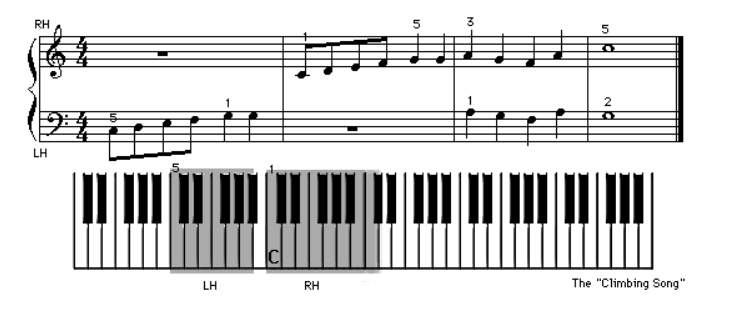Well it’s Show Time!
In this lesson we are going to put it all together. Don’t panic!. We will go slow and explain fully.
Look at the staff in the image for this section. You will be playing with your left hand first in measure number 1. In measure number 2, you will be playing with your right hand. Then in measure 3 you will be playing with both hands together. Finally, in measure 4 you will be ending with both hands together.
Play the mp3 audio file under the image to hear how this song sounds. The player is set to loop so you can just let it play for few minutes until the song becomes familiar to you.
BTW, the name of this song is the “Climbing Song.” I wrote it . . . so don’t laugh . . . *grin*.
Place the 5 th finger of your left hand on low C of your keyboard. Low C is 7 white keys below (to the left of) middle C. Look at the keyboard above to help you find low C. It is marked with a number 5.
Now, place the number 1 finger (your thumb) of your right hand on middle C. It is marked as always and also with a number 1. Your hands are now in the correct starting position to play this song.
Notice in measure 3 that you will need to adjust both hands to the right to change to new finger positions. The number 1 finger (thumb) of you left hand will start on note “A” below middle C. The number 3 finger of your right hand will start on note “A” above middle C. The whole purpose of finger positioning is so you don’t run out of fingers when you get to measure number 4. If you try and keep your fingers in the position as when you started playing the song (you can see by trying it yourself), that you would run into problems trying to play measure numbers 3 and 4.
If you haven’t already done so, push the stop button on the mp3 audio file player.
You have heard how the song is played, now give it a try for yourself. It’s time to go it alone.
It is fine to stop and listen to the song again if you need to.
Continue to play the song for 5-10 minutes. This will help you to continue to develop LH and RH coordination.




